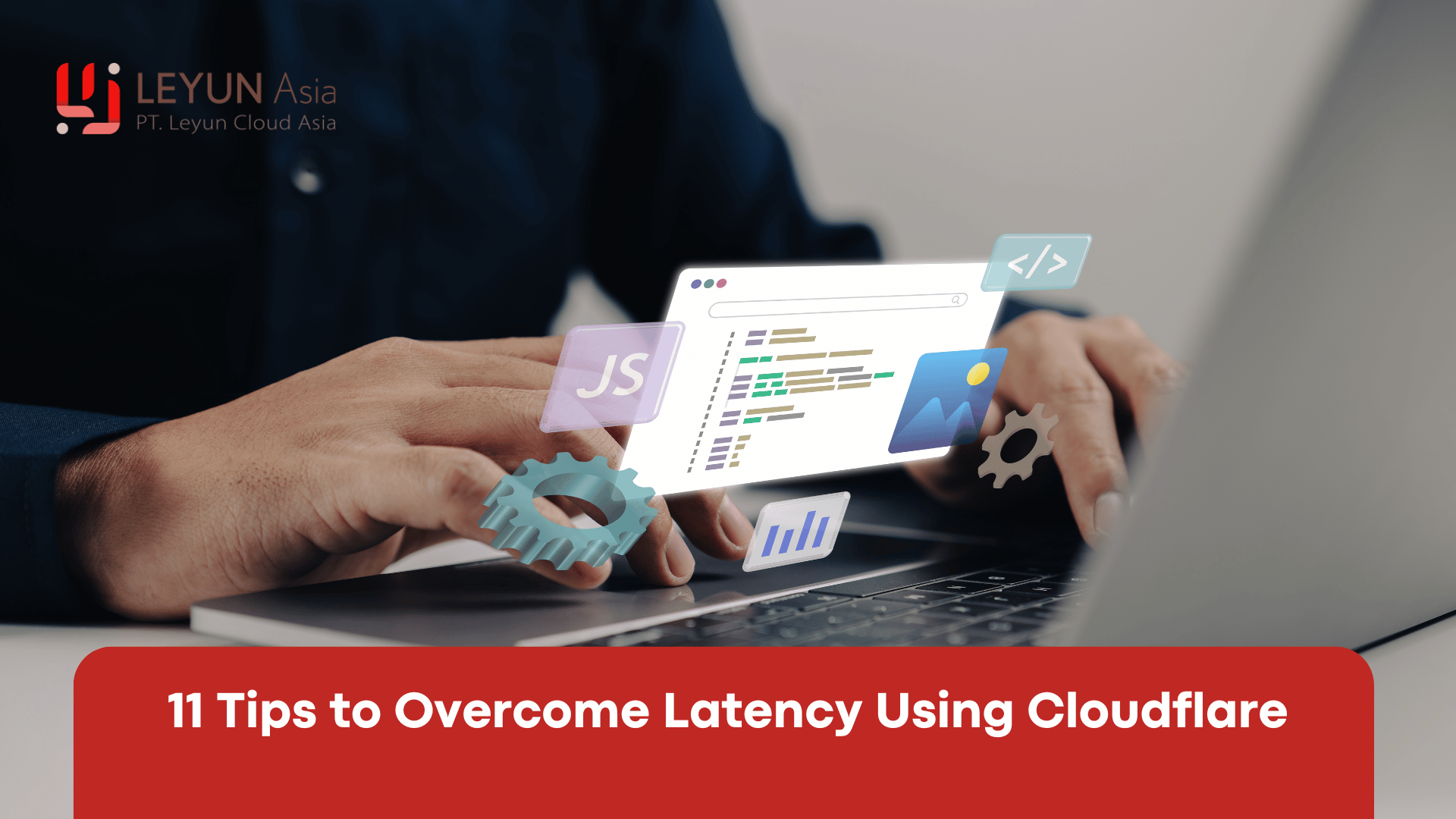If you own a website or run an online business, network latency can be frustrating. In this article, we’ll explore latency, its causes, challenges, and solutions to address it on your website. Check out the details below!
What is Latency?
Latency is the time it takes for data to travel from one point to another on a network. In computer networks and the internet, latency measures the delay between sending a request from a user’s device (such as a computer or phone) to a server and when the user’s device receives the responder’s.
Regarding websites, latency refers to the time it takes for data or user requests to reach the server and return to the user as a response. In other words, latency is the delay between when a user clicks something or sends a request to a website and when they start receiving data from the server.
A simple example of latency:
Latency refers to the delay between initiating a request and receiving a response. For example, when you type a URL in your browser and press “Enter,” the browser sends a request to a DNS server to resolve the domain name into an IP address, which introduces DNS latency. The request then travels through the internet (propagation latency) and is transmitted across the network (transmission latency) to the server, where it is processed (processing latency).
After processing, the server sends the response back to your browser, which experiences the same transmission and propagation latencies in reverse. Finally, the browser renders the webpage, adding rendering latency. The total latency is the sum of these individual delays, and it affects how quickly the webpage appears on your screen.
When you click a link on a website, latency is the time it takes from when you click to when the website starts to appear on the screen.
Components of Latency:
Latency refers to the delay that occurs between the initiation of an action (such as sending a request) and its response or completion (such as receiving a data packet or webpage). It’s crucial to understand the various components of latency to optimize performance in systems, networks, and applications. Below are the key components of latency:
1. Transmission Delay: The time it takes to send data from one device to another.
2. Propagation Delay: The time required for data to travel through a physical medium (such as fiber optic cables or air).
3. Processing Delay: The time it takes for a device (e.g., server) to process the request and generate a response.
4. Queuing Delay: The time data spends in a network device queue before being sent to its destination.
Factors contributing to latency you need to understand:
To understand and optimize latency, it’s essential to be aware of the various factors that contribute to it. These include:
– Geographical distance between the user and the server. The greater the distance, the higher the latency.
– Network capacity (bandwidth) and congestion in the network path.
– Server response time related to server or hosting performance.
– Protocols and technologies such as HTTP/2, HTTP/3, and QUIC, which can affect communication speed.
– Routing: Data must pass through various points (hops) or network nodes before reaching its destination. Complex or congested routing increases latency.
– Number of Requests: The more requests sent to load a webpage (e.g., to fetch images, scripts, and other files), the longer the loading time.
Impact of Latency on a Website
Latency has a significant impact on the performance of a website and directly influences user experience, conversion rates, and SEO rankings. Here’s a breakdown of how latency affects a website:
High latency can cause several issues:
– User Experience: High latency makes the website feel slow. Users often leave sites that take too long to load, impacting bounce and conversion rates.
– SEO: Google and other search engines consider page speed one of the ranking factors. A slow website (with high latency) can experience a drop in search ranking.
– Web Application Performance: In web applications requiring a lot of interaction, such as SaaS platforms or e-commerce sites, high latency can lead to poor user experience, especially if multiple requests are made simultaneously.
Tips to Reduce Latency with Cloudflare

Overcoming latency in web applications and improving website performance is crucial for ensuring a better user experience. Cloudflare offers various solutions to reduce latency and enhance the speed of your website. Below are some tips on how to use Cloudflare to overcome latency:
1. Enable Cloudflare’s CDN (Content Delivery Network)
- How it Helps: Cloudflare’s CDN caches static content (e.g., images, CSS, JavaScript) on its global network of servers. When a user visits your website, the content is served from the nearest Cloudflare data center, reducing latency and improving load times.
- Action: Simply enable Cloudflare’s CDN by configuring your domain to route through Cloudflare’s network. The caching will automatically improve performance by delivering content from a server closer to the user.
2. Use Argo Smart Routing
- How it Helps: Argo Smart Routing optimizes the route between the user and your server by using Cloudflare’s private network. It analyzes real-time traffic and intelligently routes data across the fastest and least congested paths, reducing latency.
- Action: Enable Argo Smart Routing in the Traffic section of the Cloudflare dashboard. This service is available with Cloudflare’s paid plans, and it can significantly reduce latency by routing traffic through the fastest available paths.
3. Enable HTTP/2 or HTTP/3
- How it Helps: HTTP/2 and HTTP/3 are modern protocols designed to reduce latency. They allow multiplexing multiple requests over a single connection, reduce connection setup time, and compress headers, all of which contribute to faster page loads.
- Action: Cloudflare automatically supports HTTP/2. For HTTP/3, enable the protocol in the Network section of your Cloudflare dashboard. HTTP/3 uses QUIC (Quick UDP Internet Connections), which further reduces latency, especially in mobile networks.
4. Optimize Image Delivery with Polish and Mirage
- How it Helps: Images are often the largest resources on a website and can slow down page load times, especially on mobile devices. Cloudflare’s Polish and Mirage optimizations can automatically compress and adjust images for faster delivery.
- Action: Enable Polish to automatically compress and optimize images in WebP format for better performance. Enable Mirage to serve optimized images based on the user’s device and screen size. These features can be found in the Speed section of the Cloudflare dashboard.
5. Use Cloudflare Workers for Edge Computing
- How it Helps: Cloudflare Workers allow you to run custom code at the edge of Cloudflare’s network (closer to the user), reducing the need to send requests back to the origin server. This can reduce latency significantly, especially for dynamic content or API requests.
- Action: Write custom JavaScript code using Cloudflare Workers to handle requests and responses at the edge. For example, you can route user requests directly to cached data or perform data processing closer to the user.
6. Cache Dynamic Content with Cache Everything
- How it Helps: By default, Cloudflare caches static content. However, dynamic content (e.g., HTML) is usually not cached. Enabling Cache Everything can cache dynamic content as well, reducing the need to fetch data from the origin server on every request and lowering latency.
- Action: Enable Cache Everything for your dynamic pages in the Caching section of the Cloudflare dashboard. You can also configure Edge Cache TTL to specify how long the cached content should be stored at Cloudflare’s edge servers.
7. Use Load Balancing for Redundancy and Faster Responses
- How it Helps: Cloudflare Load Balancing allows you to distribute traffic across multiple servers or data centers. This can improve speed by routing users to the nearest or fastest server, as well as provide redundancy in case of server failure.
- Action: Set up Cloudflare Load Balancing in the Traffic section of the dashboard. You can configure health checks to ensure that traffic is directed only to healthy servers and reduce latency by serving content from the most optimal location.
8. Minimize DNS Resolution Time with Cloudflare’s 1.1.1.1 Resolver
- How it Helps: Cloudflare’s 1.1.1.1 DNS service is known for its speed and privacy. Using this resolver reduces DNS lookup times, which in turn decreases latency during initial connection setup.
- Action: Use Cloudflare’s DNS (1.1.1.1) on your devices or network. For websites, ensure your domain’s DNS records are managed through Cloudflare’s DNS to benefit from fast resolution times.
9. Implement Browser and Server Caching
- How it Helps: Proper browser caching ensures that static resources (e.g., images, CSS, JavaScript) are stored locally on the user’s device, avoiding the need to download the same content on subsequent visits. Similarly, server-side caching can reduce load times.
- Action: Configure Cache-Control headers on your server to ensure that browsers cache resources for an appropriate period. In Cloudflare, enable Cache Everything and adjust Edge Cache TTL to manage caching for both static and dynamic content.
10. Use Web Application Firewall (WAF) with Rate Limiting
- How it Helps: Cloudflare’s WAF (Web Application Firewall) and Rate Limiting protect against attacks like DDoS, which can degrade performance and cause latency. By filtering out malicious traffic, Cloudflare ensures that only legitimate users access the application, maintaining fast response times.
- Action: Enable WAF in the Firewall section of the Cloudflare dashboard and set up Rate Limiting to prevent abuse of your web application.
11. Optimize Mobile Experience with Mobile Optimization
- How it Helps: Cloudflare offers specific features for optimizing mobile traffic, such as Polish for image compression and Mirage for serving lightweight images. Optimizing the mobile experience can reduce latency for users on slower mobile networks.
- Action: Enable Mirage and Polish in the Speed section of Cloudflare for mobile optimization. This can improve the loading time of your site on mobile devices and reduce latency in mobile traffic.
Cloudflare is a solution to combat latency. The higher the latency, the longer it takes for a website to load. For online businesses or website owners, high latency can frustrate visitors and cause them to leave the site.
Cloudflare is one solution that can help reduce latency and improve your website’s performance. Here are some simple tips to minimize latency using Cloudflare.
Applying these tips can effectively reduce latency and improve website performance using Cloudflare. These features can be activated or configured according to your website’s needs.
Conclusion
High latency can cause users to leave your site before the page finishes loading. You can reduce latency and speed up website load times by utilizing Cloudflare features such as CDN, caching, Argo Smart Routing, and compression optimization.
As a result, your website becomes faster, and the user experience improves. Want to improve performance and eliminate latency from your website? Fill out the form below to consult with us on how to use Cloudflare Enterprise.
If you need our service for your Company or organization, contact us here for more information.




